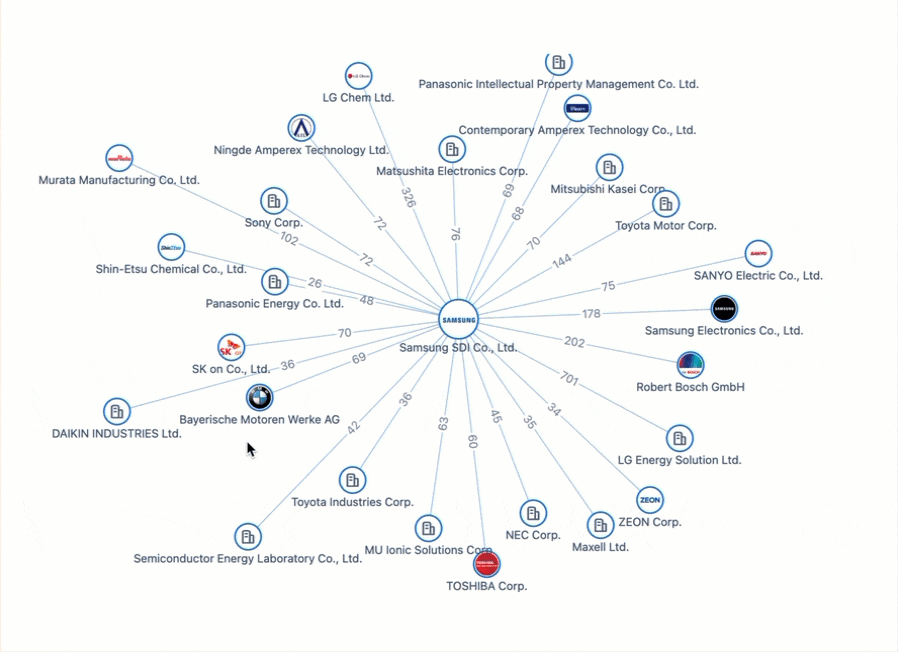License your patents in China – a world-leading IP strategist explains how
As China becomes a global IP powerhouse—with 1.3 million patent applications filed in 2016—more and more international companies are trying to take advantage of this booming economy. In China, the government is working hard to ensure IP protection and enforcement is stronger than ever. However, many Western companies remain sceptical of the Chinese patent system and are reluctant to strike licensing deals with Chinese companies, because of stereotypical horror stories about unlawful imitation and infringement.
I caught up with Matthew Wahlrab, Founder and CEO of Innovative Foundations and 2017 IAM Strategy 300 Award Winner, who explained some of the key considerations for businesses before they enter licensing deals in China:
- Prepare to finalise the deal quickly
- Fully understand the agreements you sign
- Get to know your Chinese partners in person
- Get relevant patent protection in China
Chinese companies move fast so prepare to finalise the deal quickly
Chinese business culture has an emphasis on friendship and trust. Once the foundations have been laid—for example, you’ve cooperated and built a good relationship—the deal can happen very quickly.
Matthew says, “One thing that catches people by surprise is how fast things move in China compared to the US. It’s not uncommon to fly over there and on the way back receive a contract on the plane… Be prepared for diligence because they move fast. You need to have everything ready to rock and roll—especially IP—otherwise they will find licensing partners somewhere else.”
Matthew has first-hand experience of just how fast things can move. As part of one arrangement, his team went to China for lunch with potential partners. Halfway through the meal, the conversation switched to business. The Chinese partners already had a business proposal drafted. Lunch finished and the business aspect had been pretty much completed, with most of the legal work finalised on the flight home—this was for a $2 million deal.
Matthew says, “The diligence process was the Chinese company asking, ‘Do you have IP?’ ‘Yes.’ ‘Chinese assets?’ ‘Yes.’ ‘Okay, put it in the data room and we are ready to rock and roll.’”
Fully understand the agreements you sign
Non-disclosure agreements (NDAs) provide little protection from imitators in China. NDAs are designed to protect trade secrets from being exposed to the public—however, exposing trade secrets to the public isn’t usually the concern. The real concern is about companies copying inventions for their own benefit and using your knowledge to compete with you.
Matthew says, “With NDAs, you have to be confident with what you’re signing. Many companies in China sign NDAs with companies that they know have IP, and they ask for standstills—which preclude you from asserting a patent against an infringing product in their country, even if they steal your idea during the agreement period. You sign these papers and, all of a sudden, the company in China says, ‘We have a standstill in place, you gave us these patents for 3 years.’”
It’s better to sign NNNs—which stands for non-disclosure, non-use and non-circumvention—rather than just NDAs. The terms in your agreement must be enforceable and in compliance with Chinese laws. For an NNN to be enforceable in Chinese courts, it must be written in Chinese and governed by Chinese law. Often, American companies will make the mistake of bringing over an NDA based on US law—which is difficult to enforce or uphold in Chinese courts.
Get to know your Chinese partners in person
Matthew explains how regular catch-ups can help build trust:
“Expect to spend time in China. What I find is that people are honest if you are checking in frequently. Lots of face-time builds relationships, and strong relationships go along way to keeping honest people honest. If you’re going to license and send things over to China—and commission a company to develop 100 widgets on your behalf—it’s likely that if you don’t follow up with them, they will have developed 1000 widgets and someone who was supposed to be your licensing partner is now a competitor. That’s common.”
Having a colleague or partner in China—who understands Chinese culture, the way they do business and can speak the language—is essential too. Not only can they guide you, but a local partner can save time and reduce barriers by ensuring effective communication.
Matthew says, “If you’re a smaller company, it helps to have a native in your discussions. If you haven’t put roots down there and you don’t have a strong relationship with the team you’re on, you are going to get taken advantage of.”
Get relevant patent protection in China
If you’re going to license your patents in China, you need patent protection in China—whether that is a design patent, utility model or invention patent. Protecting your technology locally is important for two reasons. Firstly, Chinese companies will take you seriously. Chinese IP protection is evolving fast—with more and more Chinese companies going head-to-head in litigation. A Chinese partner will recognise the value of patents and collaborate to protect jointly developed IP. Matthew says, “Most Chinese companies, especially big ones, don’t want to partner with you if you don’t have IP there.”
Secondly, without protection for your technology, why would a company pay a premium for your license? These companies can reverse engineer your technology for much cheaper and take advantage of all your R&D time, if you haven’t filed patents in China. Matthew says, “If you don’t have a patent and they find out how to make your secret sauces—and how to get access to your code—they could take it because there is nothing to preclude them from doing so.”
The Chinese government has taken significant steps to boost national R&D and move away from the “imitators” stereotype, through better IP protection and enforcement. More Chinese companies are partnering with foreign firms to enable a multinational presence in key markets… so there are plenty of opportunities for licensing. And the advice you should follow is simple—have adequate protection, understand Chinese business culture, build strong relationships and know the laws so you can act fast. Being prepared will better equip you to take advantage of lucrative licensing deals in a maturing Chinese economy.
About Matthew Wahlrab

Matthew Wahlrab, is the Founder and CEO of Innovative Foundations, who specialise in the intersection of patents and business development. He helps develop and manage IP strategy for corporate clients and helps executives of innovative companies, leading institutions and investors, analyse, monetise and commercialise intellectual property. He is also one of the top 300 patent strategists in the world as recognised by IAM with their IAM Strategy 300 Award. The award acknowledges his fifteen years of excellence in the disciplines of patent portfolio management, licensing, patent sales and fund raising.
Website: InnoFoundations.com
LinkedIn: Matthew Wahlrab
Read the report: 5 keys to developing a strong patent portfolio
Learn more about managing IP in China
PatSnap is pleased to welcome back Ian Harvey from Tsinghua University, Beijing & Imperial College Business School, London for a webinar on “How to manage IP in China.” Ian will share how he thinks many businesses should be managing the opportunities China’s innovation holds.
Your recommended content
-

Patsnap Surpasses US$100 Million in Annual Recurring Revenue
Category: Article | Category: News/PR
Wednesday, June 12, 2024
Patsnap has reached a significant milestone of achieving $100M in Annual Recurring Revenue (ARR), marking an impressive 20% year-over-year growth in 2023. This milestone highlights the massive and meaningful value our platform brings to over 12,000 IP and R&D teams across 50 countries, driving efficiency, productivity, and collaboration.
-

Introducing Hiro, an AI assistant built for IP and R&D workflows
Category: AI advancements | Category: AI development | Category: AI-tools | Category: Article | Category: artificial intelligence
Tuesday, May 14, 2024
Powered by Patsnap’s industry-specific LLM, Hiro is designed to streamline IP and R&D workflows from ideation to product launch. With its robust AI capabilities, Hiro brings a new level of efficiency, precision, and security to tasks that were once time-consuming and labor-intensive.What sets Hiro apart is that it draws from our large language model that’s been trained on market-leading patent records, academic papers, and proprietary innovation data. This ensures we deliver more accurate and reliable results for every prompt.
-

Powering the Future of Electric Vehicles: The Battle for Battery Innovation and Patents
Category: Article | Category: battery technology | Category: electric vehicle | Category: EV | Category: lithium ion | Category: lithium ion battery | Category: NEV | Category: new energy vehicles
Monday, April 22, 2024
In the ever-evolving landscape of innovation, the electric vehicle (EV) industry stands as a beacon of technological transformation. As we explore the patents propelling the EV revolution, Apple's venture serves as a poignant example of the challenges even industry giants face in this competitive arena. Join us on a journey through the global patent landscape, where the quest for superior power solutions unfolds, and where the true pioneers of the EV revolution are making their mark.